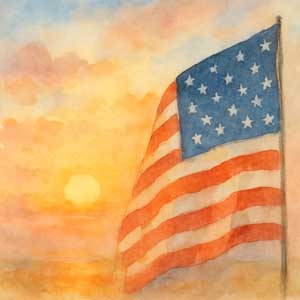— Jasper Johns

He painted flags, but it was never just about flags. It was about the act of painting. The choice. The motion. The mind behind the mark.
Jasper Johns made the familiar strange again.
Letters, numbers, maps—recalled not with meaning, but with presence. “Sometimes I see it and then paint it,” he said. “Sometimes I paint it and then see.”
He traced his own face with charcoal. Pressed fingerprints into wax.
Erased clarity. Layered thought. Let confusion breathe.
Born in Augusta, Georgia in 1930, Johns received no formal training. He once destroyed all his previous work to begin again. “I decided to stop becoming and be an artist.”
He took things “the mind already knows” and invited us to unknow them.
Art became a kind of mystery. Not to be solved, but to be experienced.
In a world that begs for definition, Johns made space for uncertainty. A brushstroke could carry more than color—it could carry a question.
And maybe that’s the truth we avoid: that the art of living is an impure situation.
And still—
we make something of it anyway.
 Let your layers speak. And mystery move you.🖌️
Let your layers speak. And mystery move you.🖌️
